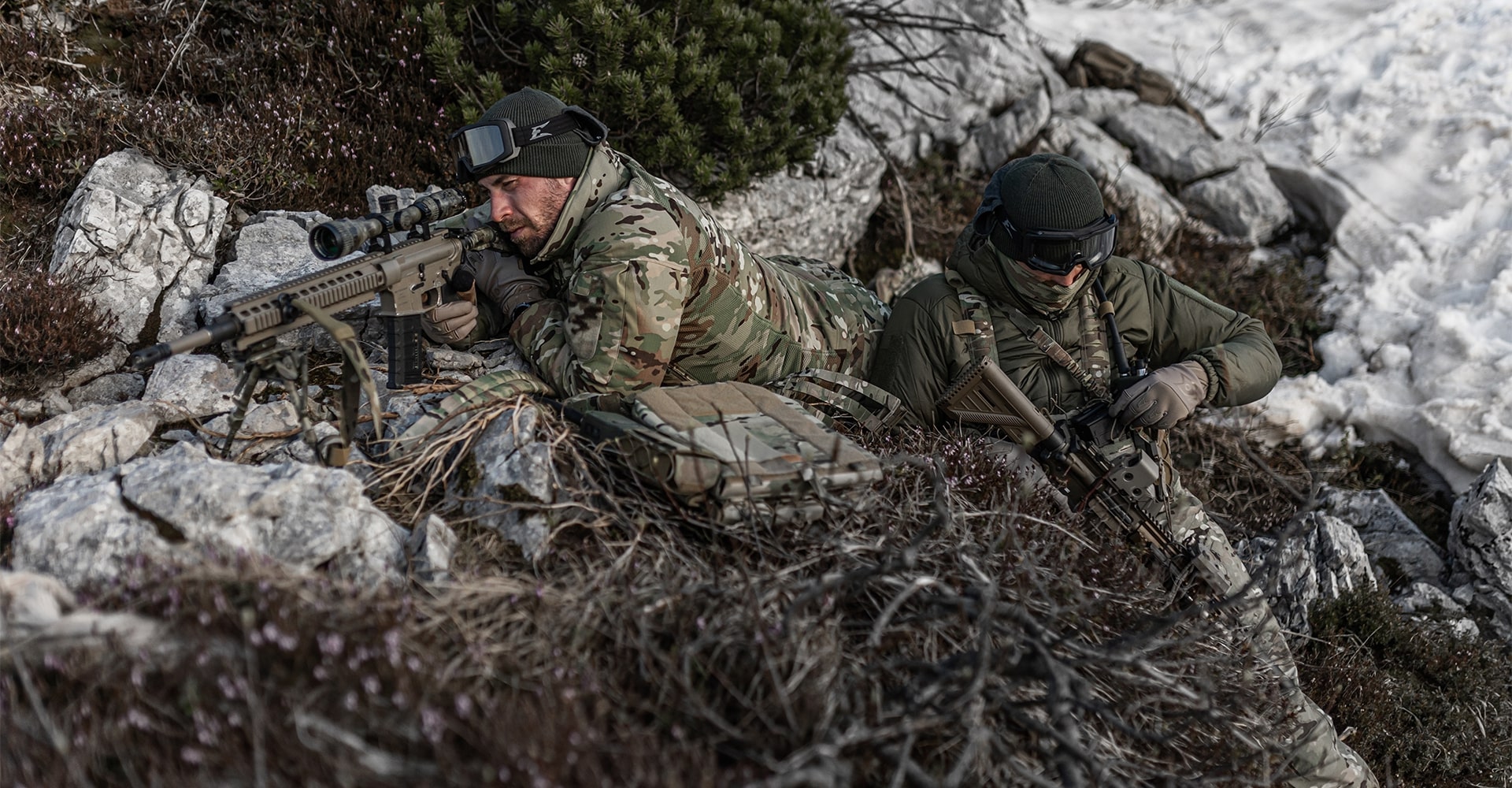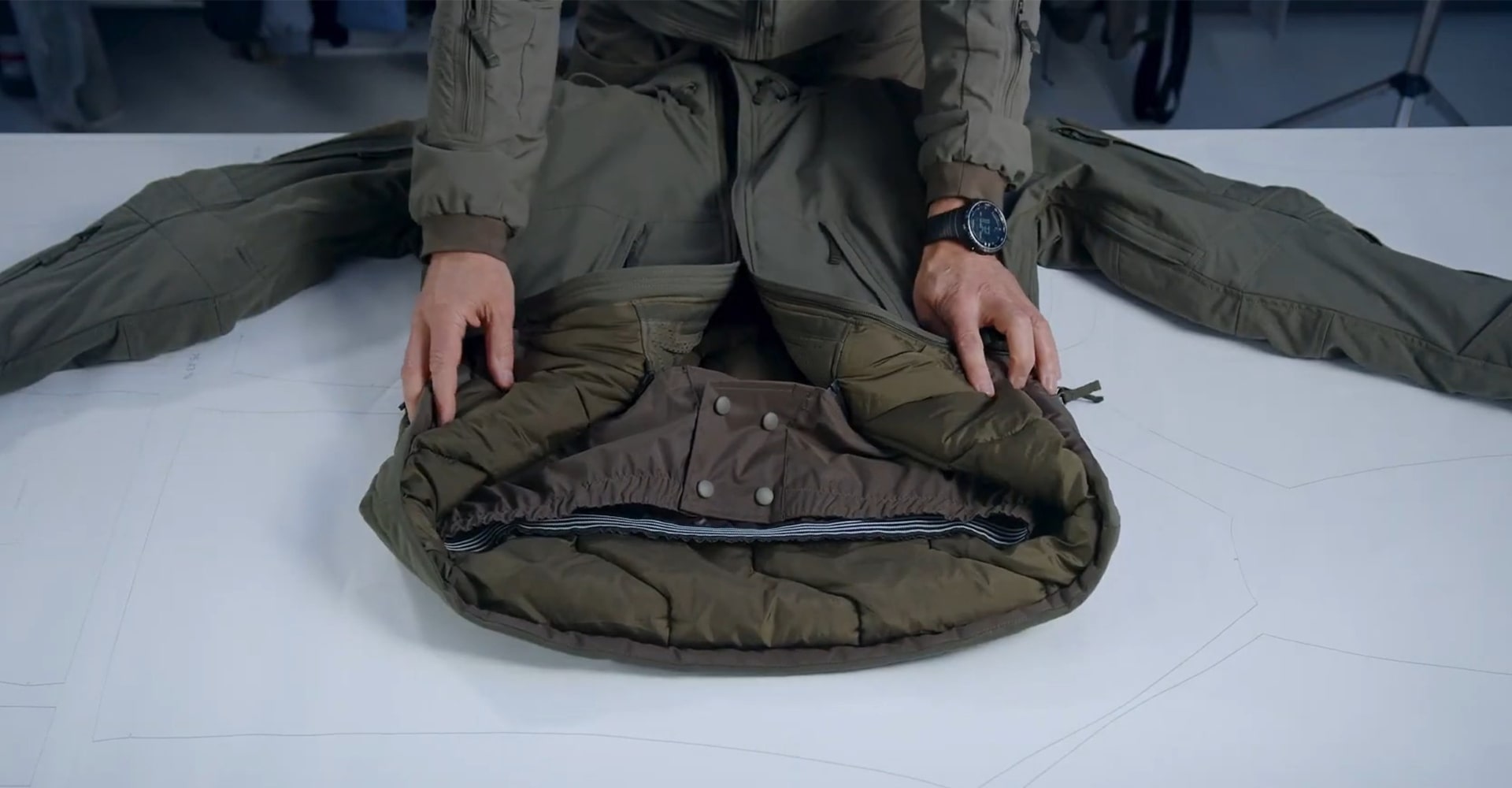As spring settles in and operations shift to warmer conditions, it’s time to transition your gear and properly store your winter tactical clothing. While it might be tempting to just shove your cold-weather gear into storage and forget about it, taking the time for proper maintenance and storage can make all the difference. It’s what separates gear that’s ready to go when you need it from gear that lets you down at the worst possible moment. Here’s how to prep, protect, and preserve your winter tactical garments for the off-season.
In this blog post:
How Winter Conditions Wear Down Tactical Clothing
Winter can be brutal. Tactical clothing that faces snow, ice, rain, wind, and those wild temperature swings is constantly under pressure. Over time, these environmental factors can:
- Cause thermal wearand breakdown of fabrics and membranes
- Lead to micro-abrasions from ice and friction against gear or terrain
- Degrade seam tape and waterproof coatings
- Increase stiffness or delamination in laminate layers
By understanding how these stressors impact your gear, you can make smarter choices about maintenance and when to replace items.

Key Design Features That Improve Longevity
Durability starts with design. Keep an eye out for features like:
- Reinforced seams and double stitching in high-stress zones
- Abrasion-resistant materials at knees, elbows, and shoulders
- Flexible insulation systems that recover from compression
- Water-repellent zippers and hardware designed for cold-weather use
These features not only extend the life of your tactical clothing but also lower the chances of gear failure during critical operations.
When to Replace Your Gear
Let’s face it, no gear lasts forever, especially in extreme cold. Think about replacing:
- Jackets or pants with insulation that’s thinning and no longer keeps you warm
- Outer shells that consistently absorb water despite durable water repellent (DWR) reproofing
- Items with irreparable seam separation or delamination
- Components with compromised safety features such as torn loops or broken zippers
Identifying wear early helps ensure operational readiness.

Clean Before You Store
This step is essential. Residual dirt, sweat, oils, and de-icing salts can damage technical fabrics, wear down DWR coatings, and even attract pests.
Follow the care instructions on each item. A gentle machine wash with mild detergent is the way to go. Steer clear of fabric softeners, bleach, or any harsh chemicals. Keeping waterproof layers in top condition takes more than just a quick rinse. If you're unsure how to do it right, check out our guide: Key Maintenance Tips for Waterproof Tactical Jackets for a reliable step-by-step process.
If the garment is down-insulated or includes specialty laminates, consider professional cleaning to maintain structure. For stretch panels or mesh inserts found in hybrid shirts and softshells, extra care is needed as they retain more residue than heavier materials.
Make sure your gear is completely dry before you store it. Even a little moisture can lead to mildew.
Repair Before You Store
Don’t let small issues turn into big problems. Before you tuck everything away for storage:
- Fix broken zippers or replace sliders
- Patch tears or abrasions with appropriate materials
- Re-stitch loose hook and loop panels or stretched elastic
- Inspect high-wear areas like knees, elbows, and shoulders
Don’t forget to inspect knee pad attachment points, hood tensioners, and replace any worn cord locks as needed. Addressing damage now prevents problems later.

SUBSCRIBE TO UNLOCK OUR EXCLUSIVE CONTENT
Enter your email and get timely updates and relevant intel on tactical topics directly to your inbox.
Du meldest Dich für unseren Newsletter an und Du kannst Dich jederzeit abmelden. Lese mehr in unserer Datenschutzerklärung.
Restore DWR and Reproofing
DWR coatings degrade over time due to snow, salt, and abrasion. Before storage, test water repellency. If water no longer beads, reproof.
- Wash with technical cleaner (no detergent residue)
- Apply spray-on or wash-in DWR treatment
- Tumble dry (if permitted) or iron on low with a towel to reactivate the coating
For a step-by-step guide on how to clean and reproof your rain gear correctly, check out our blog: How to Maintain Rain Gear and DWR Treatment.

Choose the Right Storage Solutions
To keep your tactical clothing and gear performing at their best, proper storage is key:
- Use plastic bins for durable, stackable protection
- Avoid compressing insulation in vacuum-sealed bags
- Store softshells and base layers in breathable fabric bags
Sort gear by type or mission use for easier access. Ensure all containers are dry, clean, and sealed.
Store in a Suitable Environment
Choose a storage location that’s cool, dry, and shaded:
- Interior closets
- Climate-controlled gear rooms
- Under-bed areas with airflow
Avoid damp basements or overheated attics. Elevate bins off the ground to prevent moisture damage.
Protect Against Pests
When it comes to your insulated gear and wool-blend layers, pests can be a real nuisance. To keep them at bay, consider using some natural repellents like:
- Cedar blocks
- Lavender sachets
- Rosemary or thyme bundles
Avoid mothballs. Refresh repellents every few months. Using breathable mesh pouches can help circulate the scent while providing extra protection.
Avoid Overpacking
Stuffing your bins to the brim can lead to some issues, such as:
- Distorted garment shapes
- Compressed insulation
- Stressed seams and zippers
To keep everything in good shape, fold your garments by weight, allow for airflow, and use tissue paper between layers to help maintain their form.
Label, Inventory and Rotate
Label all containers and track contents. Keep notes on items needing repair or rotation. This is also a good time to inspect warm-weather tactical clothing.
Digitize your inventory with photos and notes to simplify seasonal transitions.
Prepare for Field Reuse
Set your kit up for rapid redeployment:
- Group gloves, gaiters, and underlayers in labeled dry bags
- Pack cold-weather layers into modular pouches
- Place priority items at the top for fast access
Create a checklist for your next cold-weather loadout. Efficient storage supports quicker mission readiness.

Final Thoughts
Properly storing your winter tactical clothing isn’t just routine—it’s part of staying mission-ready. A few careful steps now can prevent performance issues, unnecessary wear, or costly replacements down the line.
Cleaning, repairing, and storing your gear the right way extends its lifespan, protects technical materials, and ensures you’re not caught off guard when temperatures drop again. Think of it as preserving your advantage—because reliability starts long before deployment.
Take the time now, and your gear will take care of you when it matters most.




